- News
- Reviews
- Bikes
- Components
- Bar tape & grips
- Bottom brackets
- Brake & gear cables
- Brake & STI levers
- Brake pads & spares
- Brakes
- Cassettes & freewheels
- Chains
- Chainsets & chainrings
- Derailleurs - front
- Derailleurs - rear
- Forks
- Gear levers & shifters
- Groupsets
- Handlebars & extensions
- Headsets
- Hubs
- Inner tubes
- Pedals
- Quick releases & skewers
- Saddles
- Seatposts
- Stems
- Wheels
- Tyres
- Tubeless valves
- Accessories
- Accessories - misc
- Computer mounts
- Bags
- Bar ends
- Bike bags & cases
- Bottle cages
- Bottles
- Cameras
- Car racks
- Child seats
- Computers
- Glasses
- GPS units
- Helmets
- Lights - front
- Lights - rear
- Lights - sets
- Locks
- Mirrors
- Mudguards
- Racks
- Pumps & CO2 inflators
- Puncture kits
- Reflectives
- Smart watches
- Stands and racks
- Trailers
- Clothing
- Health, fitness and nutrition
- Tools and workshop
- Miscellaneous
- Buyers Guides
- Features
- Forum
- Recommends
- Podcast
BUYER'S GUIDE
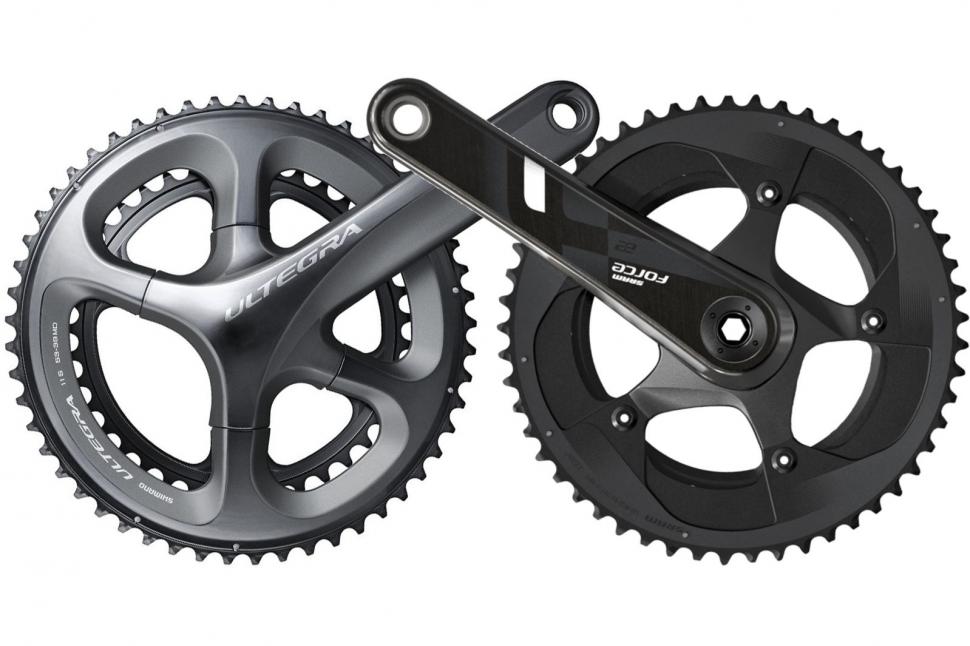 Ultegra v Force
Ultegra v ForceHead to head: Shimano Ultegra v SRAM Force
If you’re choosing between Shimano Ultegra (mechanical rather than electronic) and SRAM Force 22, the aim of this article is to tell you everything you need to know to make the right decision.
Shimano Ultegra and SRAM Force 22 are the second level road groupsets from their respective manufacturers, sitting below Dura-Ace and Red, and both are 11-speed.
Aluminium-framed bikes with complete Ultegra groupsets start around £1,500, though you might find a smattering of Ultegra on some cheaper bikes.
If you want a carbon framed bike fitted with Ultegra, you’ll usually need to budget a bit more. Giant’s TCR Advanced 1, for instance, has a carbon fibre frame and a complete Shimano Ultegra groupset for £1,775 (we're not saying than any of these bikes are the cheapest of their type, by the way).
At the other end of the spectrum, you’ll find Ultegra on bikes costing £3,000 and more. Specialized’s Tarmac Expert, for example, has a mostly Ultegra groupset, and it’s priced at £3,000.
There are far fewer complete bikes equipped with Force 22, and they tend to come from mail-order specialists who like Force's value for money.
We’re not covering the Ultegra Di2 electronic groupset here because there’s no SRAM Force equivalent.
SRAM Force is also available as a 1x system with a single chainring matched up to a wide-ranging cassette. We’re not dealing with that here because it has no direct rival from Shimano. Bear in mind that although some of the components are the same, SRAM Force 22 and SRAM Force 1 are different in many key respects.
We’ll go through each component in turn. All the prices shown here are RRPs provided by the brands themselves, although you can find products considerably cheaper at discount.
Shifters
Ultegra RRP: £319.99 | Typical price: £179.99
Force 22 RRP: £303 | Typical price: £247.50
Shifting is the area in which you’ll notice the biggest difference between Shimano Ultegra and SRAM Force 22.
With Shimano, you move the chain up the cassette by sweeping the brake lever to the side. You move the chain in the opposite direction by pushing a lever that sits just behind the brake lever. Shifting between chainrings is a similar operation. This is a system that Shimano uses across its road groupsets, from entry-level Claris to top-end Dura-Ace.
Shifting has a very light feel thanks to derailleur design and polymer-coated shift cables, and it feels almost the same whether you’re moving the chain at the bottom of the cassette or at the top.
When we reviewed the latest Shimano Ultegra 6800 groupset here on road.cc we said, “It's very hard to make an upshift fail even under heavy load, and it's nigh-on impossible with a downshift.”
The levers hoods are slim, as they are with Dura-Ace, so gripping them is easy even if you have small hands. You can also bring the levers closer to the bars via a lever stroke adjustment bolt.
SRAM has its own DoubleTap design where both upshifts and downshifts are performed using a single paddle that sits behind the brake lever. You push it a short distance to move down the cassette, and you push it further to move up the cassette. It’s a similar deal with front shifting: a short push moves you the smaller chainring, a longer push moves you up to the larger one. The alloy shift lever and the carbon brake lever are independently adjustable for reach.
Each system has its fans, and the only way to find out which one you prefer is to try them both, so we’d suggest a visit to your local bike shop or asking friends if you can borrow their bike for a trial run.
When we reviewed SRAM Force 22 we said, “Shifting is simple and precise, with a light action but positive feedback. It's more clicky than Shimano but with not quite as much feedback as Campagnolo. You're never in any doubt about whether you're shifting.
“The accuracy of the shifts is a product of all the components of the system, not just the levers, but SRAM make great play of their Zero-Loss technology which should mean all shifts are immediate. And to be fair, most of them are. It's difficult to get the groupset to miss a beat.”
SRAM has removed a bit of bulk from the Force lever, although it's still a touch chunkier than Shimano or Campag, and a bit squarer in profile. Which design you prefer is going to come down to personal preference.
SRAM gives a claimed lever weight of 307g (the pair) while Shimano claims 425g for its levers.
SRAM also provides Force 22 with hydraulic braking. Whether you go hydraulic rim brakes (£320 per wheel, includes shifter and calliper) or hydraulic disc brakes (£300 per wheel, includes shifter and calliper), the front of the levers are much taller than for the cable-operated brakes because they contain a master cylinder. These provide a good handhold, although whether or not you like the appearance is a matter of personal taste.
You can use Shimano Ultegra with hydraulic braking too. We tried out the non-series (they’re not part of any groupset) RS685 mechanical shifters/ hydraulic disc brake levers with RS785 brake callipers and found the performance to be faultless.
“The amount of lever travel is just right, they’re easy to operate from the hoods, and you can use one finger all of the time from the drops, even when you’re panic braking because a car has pulled out in front of you,” we said.
Shimano has new RS805 disc brakes built specifically for its Flat Mount system, but we’ve not used them yet.
Shimano Ultegra is also available with electronic Di2 shifting, although SRAM Force isn’t. SRAM is, though, releasing a wireless Red eTap electronic groupset in spring 2016.
Chainset
Ultegra RRP: £259.99 | Typical price: £162.95
Force 22 RRP: from £220 | Typical price: from £141
SRAM Force cranks are made from unidirectional carbon-fibre with a machined alloy spider. Unlike Shimano and Campagnolo, SRAM has stuck with a five equally spaced bolts to hold its chainrings in place, one of those bolts behind the crank.
SRAM has stiffened up the chainrings. They're now machined from 5mm 7075-T6 aluminum and they're shaped and ramped to harmonise with the front derailleur (see below).
When he tested SRAM Force 22 for road.cc, Dave Atkinson said, “I couldn't eke any noticeable flex out of it. Shifting with the Yaw front mech (see below) was generally flawless. There's not much more a chainset can do, really. It's light, stiff and shifts well. Good work, SRAM Force chainset.”
It’s available in 53/39, 52/36, 50/34 and a cyclo-cross specific 46/36-tooth chainring options, and in 165mm, 170mm, 172.5mm, 175mm and 177.5mm crank lengths.
The alloy Shimano Ultegra chainset is available in exactly the same chainring configurations, and in the same crank lengths minus the 177.5mm. All use the same bolt spacing, so switching from standard to compact is just a case of swapping the rings and nudging your mech. With SRAM, the 53/39 chainset has a different bolt spacing from the other options.
The idea behind the unequal spacing on the four-arm chainset is that the arms are placed to deal with the stresses that a chainset endures from your pedalling. You don't apply equal pressure all the way round the pedal stroke, so by moving the arms and reducing their number by one, you get the same stiffness but for a lower weight.
The big gap between arms two and three wouldn't really work with a standard single-piece alloy chainring, as the gap is too big and the ring would flex. But the outer chainring on the Ultegra 6800 groupset is two alloy plates sandwiched together, with a hollow centre. As such it's much stiffer, and able to bridge the gap effectively.
SRAM claims a weight of 697g for a Force 1 chainset with 172.5mm cranks and 53/39-tooth chainrings (BB30 bottom bracket not included) and 715g for a GXP version. Shimano claims 765g for an Ultegra chainset (crank length not stated) with 53/39-tooth chainrings, including the bottom bracket (the BB is about 65-75g).
Front derailleur
Ultegra RRP: From £39.99 | Typical price: From £23.15
Force 22 RRP: £41 | Typical price: £34.99
Rather than simply moving in and out, SRAM’s Force 22 Yaw front derailleur is designed to rotate inline with the chain when you shift between chainrings. This eliminates the need to trim the position of the front mech to avoid chain rub (where the chain hits the side of the front derailleur cage) when you move from one side of the cassette to the other.
The Yaw design really works. The setup still needs to be very precise, but once you've dialled it in you can go big chainring/big sprocket and small chainring/small sprocket (although chain wear is greatest whenever the chainline is at its extreme).
We’ve always found shifting between the two rings to be very good, and SRAM includes a chain catcher (to stop the chain coming off the inner ring) as part of the front mech package.
The Shimano Ultegra front derailleur has a much longer activation arm than previously to reduce the shift effort, and it features a support bolt that comes into contact with the frame to stiffen up the structure. If you have a carbon frame you'll want to cover the contact point with the stick-on alloy plate to avoid damage.
Front shifts feel light with an excellent pick-up from the chain and the chainring ramps on the upshift.
SRAM claims a weight of 79g for a braze on front derailleur, plus 10.2g for the chain spotter. Shimano claims 89g for the Ultegra front derailleur.
Rear derailleur
Ultegra RRP: From £79.99 | Typical price: £52.99
Force 22 RRP: £76 | Typical price: £58.99
The rear shifts you get with Shimano Ultegra are excellent, the derailleur working with polymer-coated cables that reduce the friction to offer light-action gear changes.
Shimano offers the rear derailleur in two cage lengths, the shorter of which allows you to use a maximum sprocket size of 28-tooth. With the mid-cage version you can go up to 32-tooth.
The SRAM Force rear mech, which comes with a carbon outer cage, is also available with two cage lengths, the longer one of which can handle a 32-tooth sprocket.
When we reviewed it, we said, “Force 22, like all of SRAM's road groupsets, uses their Exact Actuation technology. Put simply, this means that for every 1mm of cable that gets pulled through the shifter, the derailleur cage will move 1mm as well. Both Shimano and Campagnolo use a higher ratio, pulling less cable to get the same amount of movement.
“Does it make a difference? Well, in theory it should make the SRAM system a bit more forgiving of tiny changes in the length of the cable run caused by the various bits settling into their stops, and each other. In practice, I can't say I've found it noticeably better in that regard.”
The Force rear derailleur goes about its business with quiet aplomb. Missed shifts have been few and far between whenever we’ve used it.
SRAM claims a weight of 178g for the short cage Force 22 rear derailleur, and 187g for the mid-cage version. Shimano claims 195g for the short cage Ultegra rear derailleur, and 207g for the mid-cage model.
Brakes
Ultegra RRP: From £69.99 (per brake) | Typical price: £39.99/brake
Force 22 RRP: £110 (per pair) | Typical price: £86.48/pr
SRAM makes its Force mechanical brakes to a dual pivot design, and uses SwissStop pads. The brakes are lightweight and good looking, and that they work well.
“They're very good,” we said in our review. “They have plenty of power and the modulation, and the feel at the lever is excellent. The indexed quick release lever is good too. But in terms of all-out performance, they're a shade behind Shimano at the moment.”
Shimano’s brakes are dual pivot as well, but instead of using the brake bolt as a pivot, the Ultegra units have two symmetrical pivots that are attached to a carrier that then mounts to the normal point.
Shimano uses a very good brake pad compound and polymer-coated cables to provide an excellent performance.
“The braking effort to stop you is reduced, and that means less arm fatigue on long rides,” we said in our review. “Haul them on and they're both powerful and controllable. The improvement over the previous Ultegra callipers is especially noticeable in the wet, which is possibly down to the new brake compound rather than the redesigned body, but everything works very well together here.”
We rated them 10/10.
Shimano also offers a direct mount option (£59.99 per brake) where the arms attach directly to the frame to increase power, save weight and, in many cases, reduce drag. You need to have a bike frame that is especially designed to take these.
SRAM claims a Force 22 brake weight of 280g (pair), while Shimano claims 317g for its Ultegra brakes.
SRAM Force 22 is also available with hydraulic braking (see ‘Shifters’, above) for improved power and control, especially in wet conditions. The disc brakes use 18mm pistons front and rear, and SRAM recommends 160mm rotors for the road.
When we used Shimano’s non-series RS685 levers (which you can use with any of Shimano’s 11-speed groupsets) with RS785 callipers, we said, “The brakes are powerful, strong and, really they just feel fantastic… You can splash through puddles and ride through mud, caking the rim, but the disc brakes will give you the same predictable braking performance.”
Cassette
Ultegra RRP: From £74.99 | Typical price: £54.95
Force 22 RRP: £80 | Typical price: £52.98
SRAM offers its Force 22 cassette in several different flavours: 11-25, 11-26, 11-28 and 11-32-tooth (you need to get the appropriate rear derailleur to handle the cassette you’re using). There’s even an 11-36 one, but you need to use that as part of a Force 1 (single chainring) system.
All the cassettes use an alloy/steel spider for the big sprockets with loose steel smaller sprockets and plastic spacers.
Shimano offers 11-23, 11-25, 12-25, 11-28 and 11-32-tooth Ultegra cassettes, and they work splendidy.
SRAM claims a weight of 231g for the 11-25-tooth cassette; Shimano claims 212g for an 11-23-tooth cassette.
Chain
Ultegra RRP: £27.99 | Typical price: £26.50
Force 22 RRP: £37 | Typical price: £29.99
SRAM's 11-speed PC-1170 chain uses hollow pins to save a bit of weight, and it comes with a Powerlink connector that makes fitting a whole lot easier, although it's a one-time-only unit.
We’ve always found SRAM chains to give a decent service life.
Shimano offered directional chains for a couple of years, but we're back to symmetrical now so it’s impossible to get them the wrong way round.
The chain has a surface coating called Sil-Tec that’s designed to reduce friction between all the moving parts, and the chain wear is good.
Like SRAM’s chain, the Shimano one has hollow pins, but rather than using a tool-less connector it joins with an extended pin that you put in place with a chain tool before snapping the end off. If that’s not for you, you can use a third party connecting link.
Shimano claims a weight of 257g for 116 links while SRAM claims a weight of 256g for 114 links.
Overall
Both Ultegra and Force 22 perform as well as the top end groupsets in their respective ranges, Dura-Ace and Red. The differences are that they weigh a touch more – not loads more – and they lack a little of the prestige, if that’s the sort of thing that interests you. Assuming you can live with that, you can save yourself a lot of money by opting for Ultegra or Force 22, because both Shimano and SRAM really make you pay a lot for their peak products.
When choosing between Ultegra and Force, the biggest factor you need to consider is the shifting: which system do you prefer?
Beyond that, we’d say that Shimano cable-operated rim brakes outperform SRAM’s, but if you’re after hydraulic braking there’s less to choose between them.
Please let us know your thoughts, particularly if you have experiences of both systems.
[This article was last updated on July 26, 2017]
About road.cc Buyer's Guides
The aim of road.cc buyer's guides is to give you the most, authoritative, objective and up-to-date buying advice. We continuously update and republish our guides, checking prices, availability and looking for the best deals.
Our guides include links to websites where you can buy the featured products. Like most sites we make a small amount of money if you buy something after clicking on one of those links. We want you to be happy with what you buy, so we only include a product if we think it's one of the best of its kind.
As far as possible that means recommending equipment that we have actually reviewed, but we also include products that are popular, highly-regarded benchmarks in their categories.
Here's some more information on how road.cc makes money.
You can also find further guides on our sister sites off.road.cc and ebiketips.
road.cc buyer's guides are maintained by the road.cc tech team. Email us with comments, corrections or queries.
Mat has been in cycling media since 1996, on titles including BikeRadar, Total Bike, Total Mountain Bike, What Mountain Bike and Mountain Biking UK, and he has been editor of 220 Triathlon and Cycling Plus. Mat has been road.cc technical editor for over a decade, testing bikes, fettling the latest kit, and trying out the most up-to-the-minute clothing. He has won his category in Ironman UK 70.3 and finished on the podium in both marathons he has run. Mat is a Cambridge graduate who did a post-grad in magazine journalism, and he is a winner of the Cycling Media Award for Specialist Online Writer. Now over 50, he's riding road and gravel bikes most days for fun and fitness rather than training for competitions.
Latest Comments
- mjc2669 0 sec ago
I've watched cycling for years.. can't stand watching overpaid footballers. I do watch free to air tennis and rugby but it's mainly cycling for me...
- galibiervelo 22 min 9 sec ago
Fantastic event. Amazing champion and last hour wassuper to watch, bar the bottle throw
- David9694 10 hours 26 min ago
+1 on saddle height and also check your lateral alignment - everything should be straight and aligned. My bike fit years ago moved my feet to the...
- froze 10 hours 30 min ago
Everything Lezyne sells are really good, especially their pumps, and the Torque Drive. ...
- wtjs 11 hours 14 min ago
It's not only the UK which suffers from vile louts-VdP is a great athlete who deserves respect!
- Hirsute 11 hours 50 min ago
https://www.youtube.com/watch?v=wOzP87HVCWw
- Rendel Harris 13 hours 16 min ago
Apart from the fact that you're completely wrong - Decathlon is a French company and has 1045 stores in Europe compared to 50 in the UK - whilst...
- hawkinspeter 15 hours 22 min ago
Finally tried out the Smart Lever that I did get for Xmas as I had a suspicious looking bubble/bump on my rear GoodYear tyre (don't think I'll buy...
- pockstone 15 hours 48 min ago
Suitable reply, No Reply.


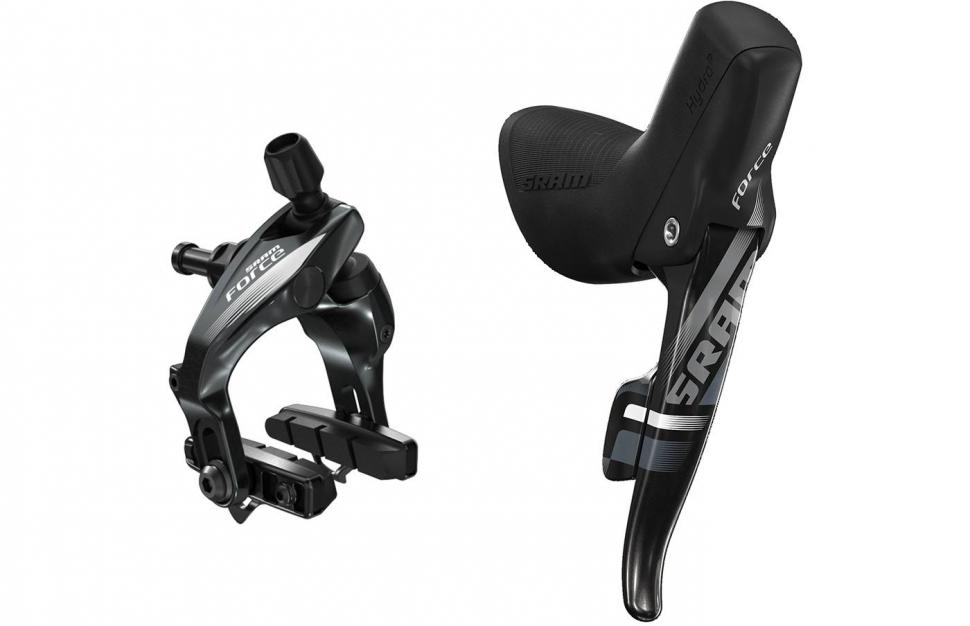
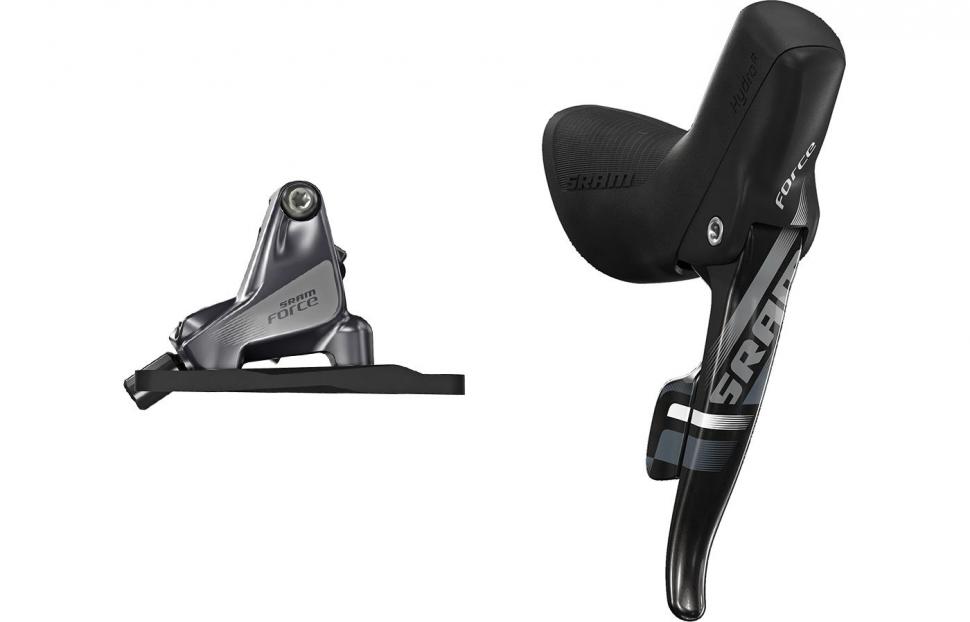
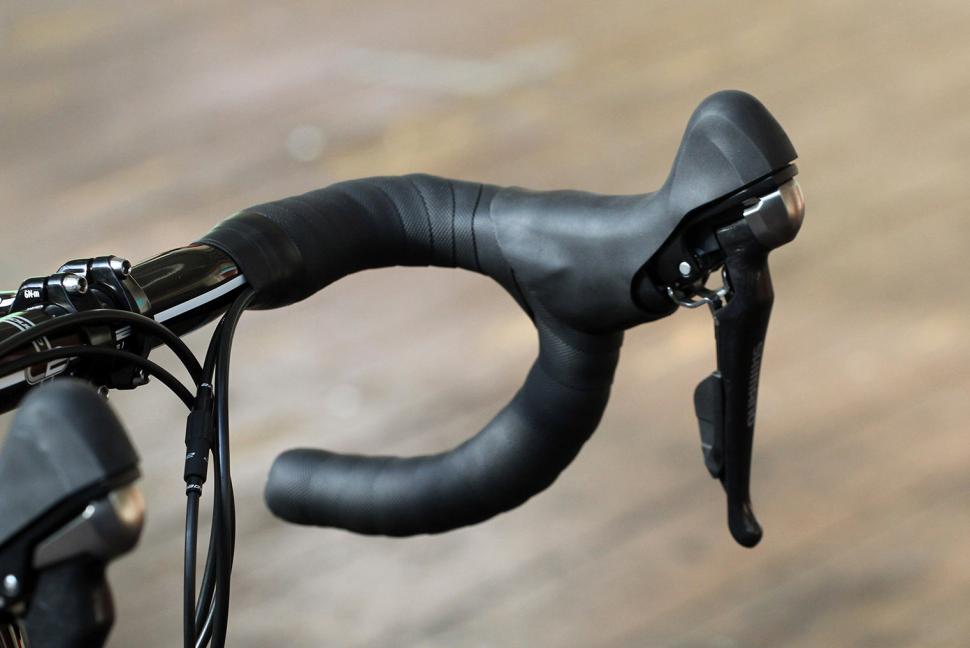
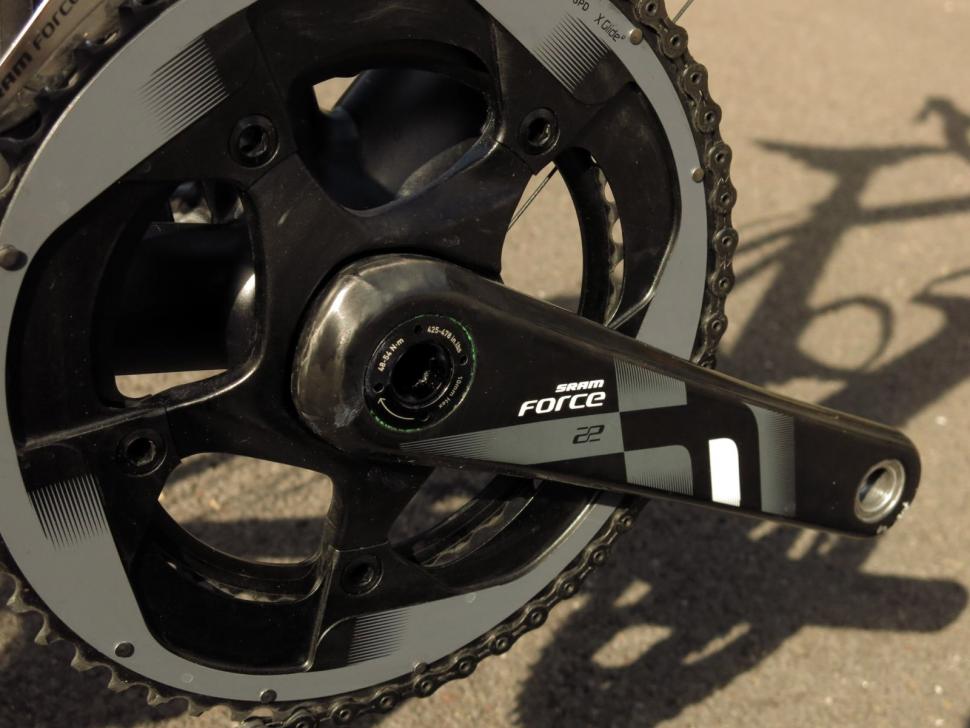

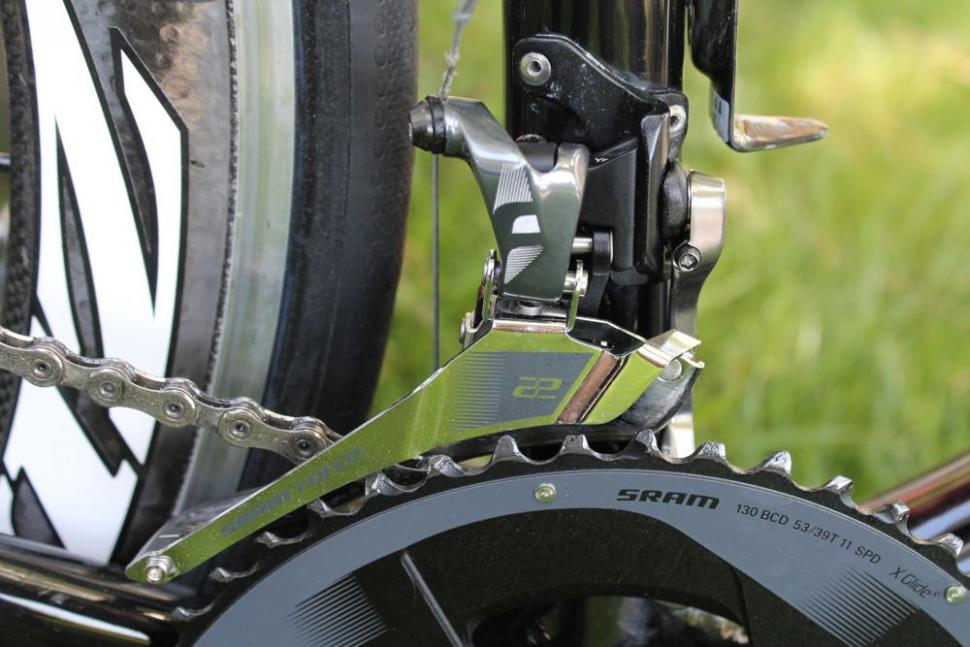

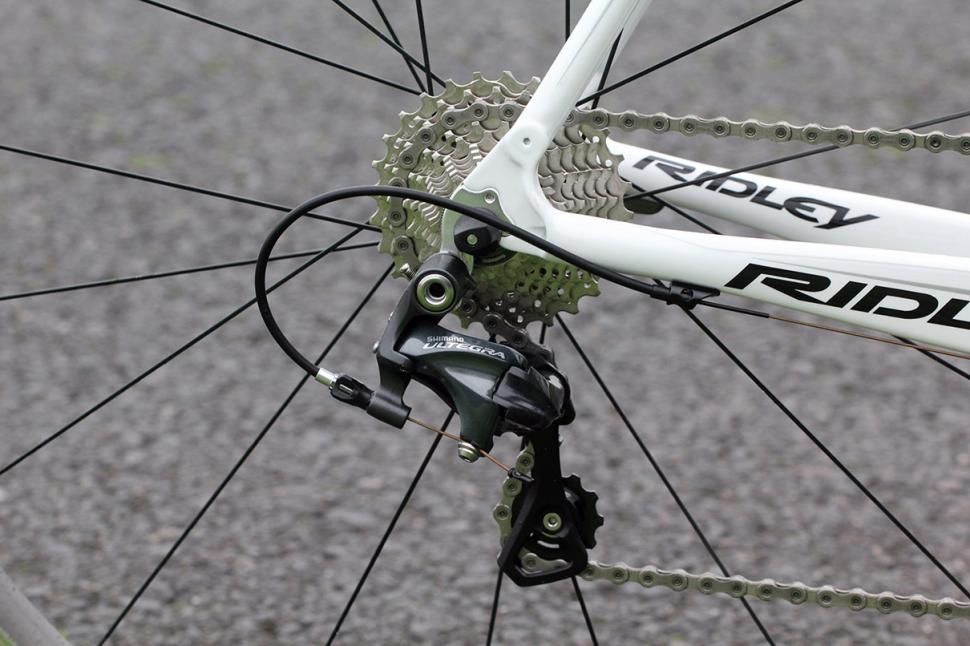
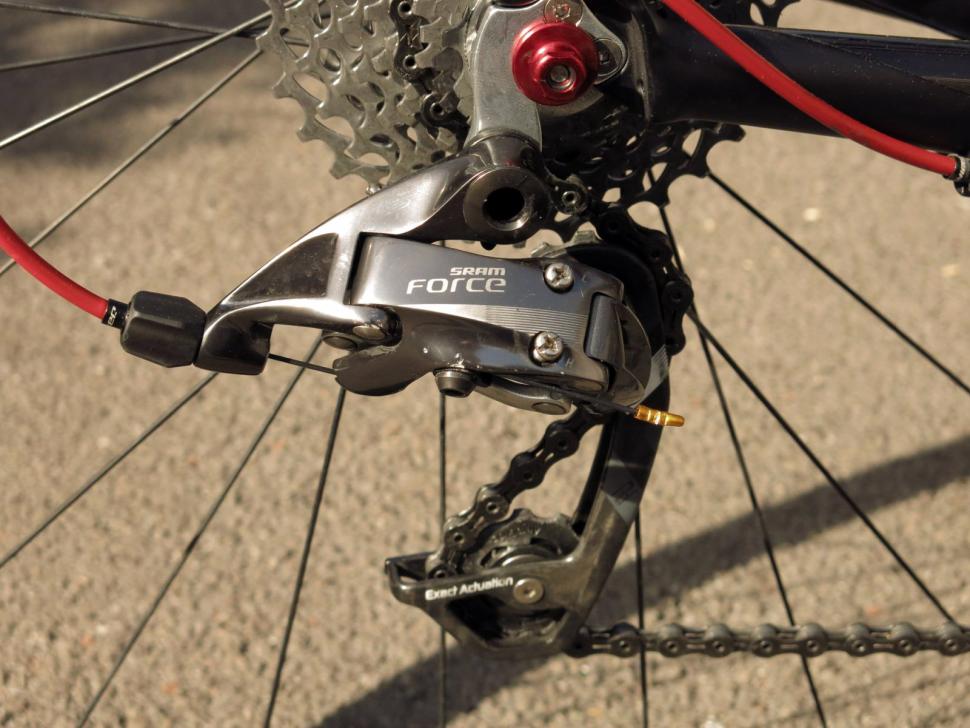
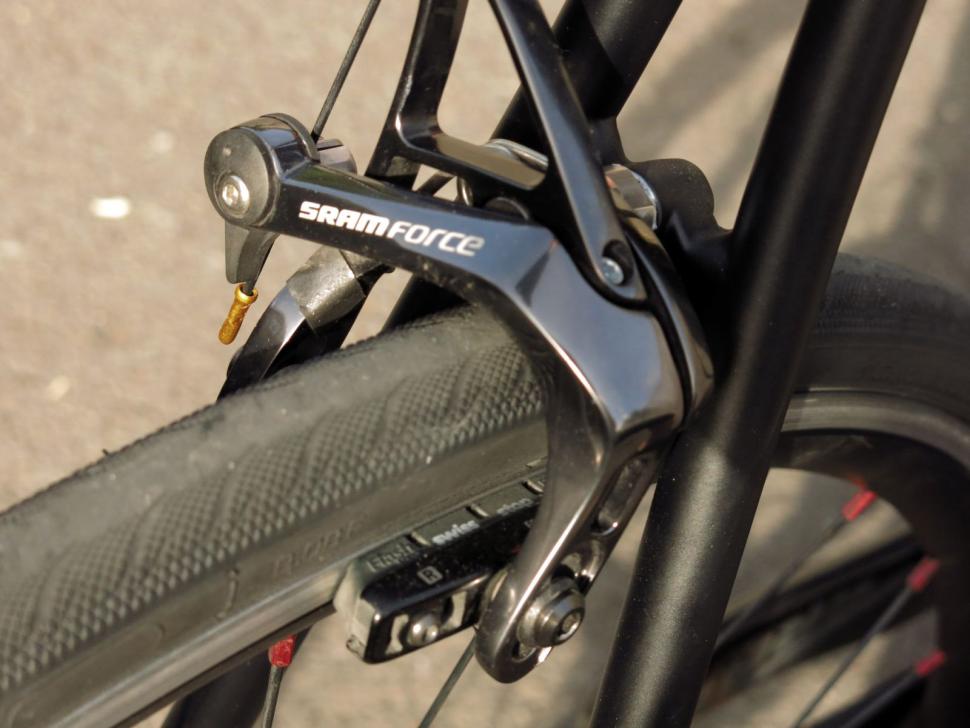
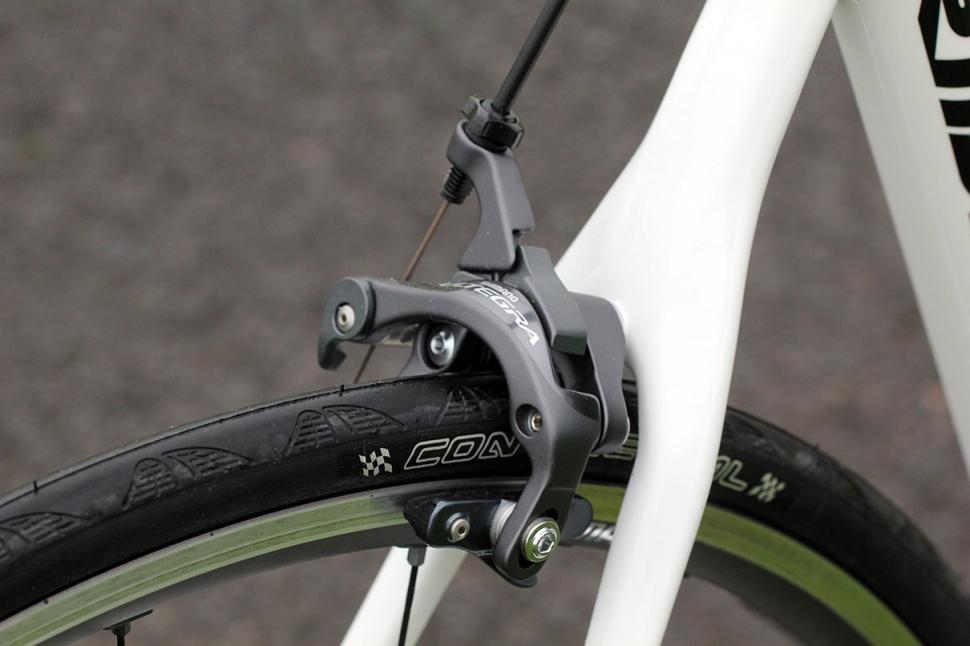
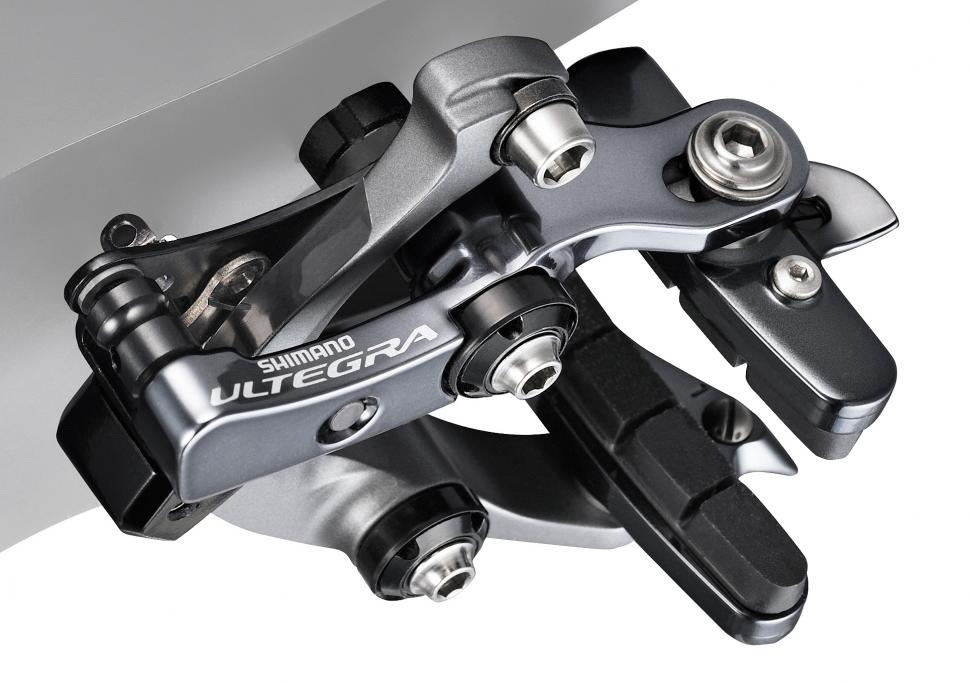
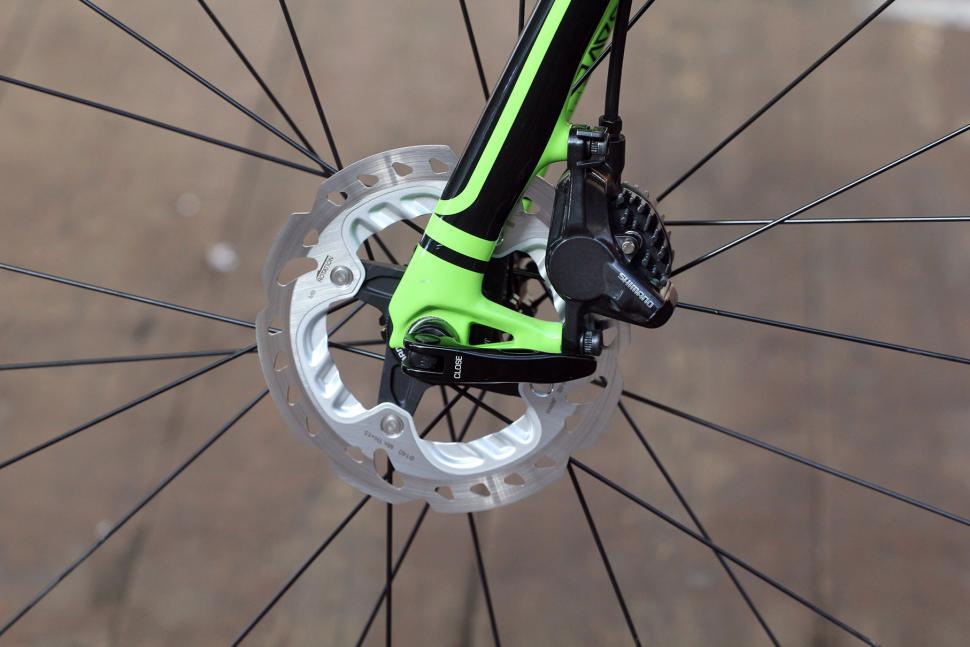


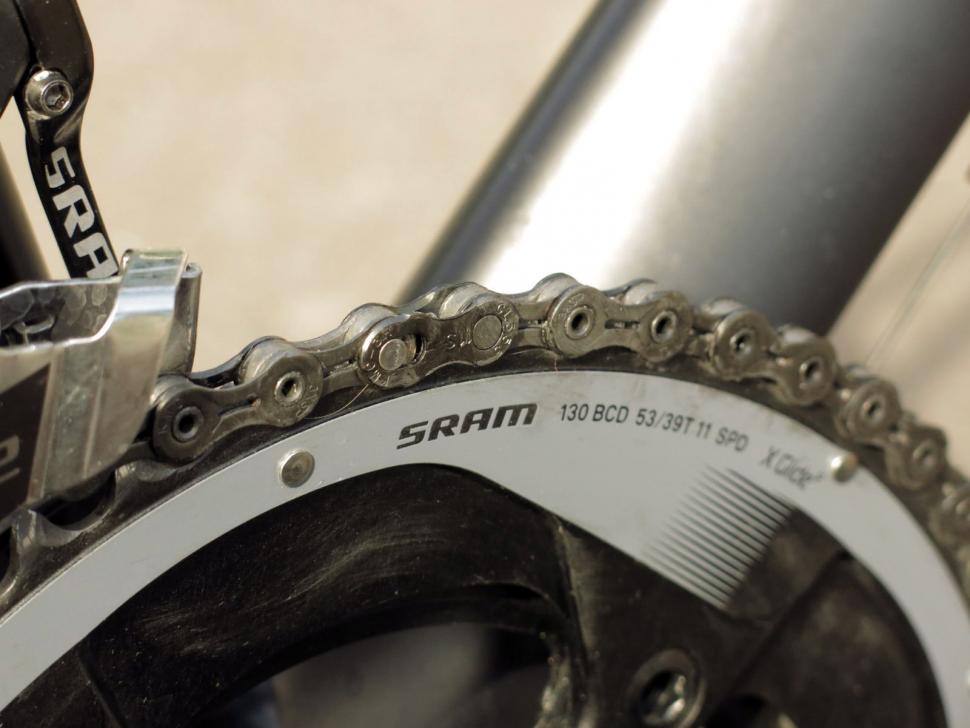

Add new comment
4 comments
Decisive factor for me was the fact that SRAM brake levers (like campag) cannot move side to side. In cold wet weather with thick gloves I had a couple of brown trouser moments grabbing for a Shimano brake lever from the drops to find it slipped out of my grasp. Not often, but scary when it happens. Was enough to sway it with all other comparisons equal.
Also Shimano use oil in their hydraulic lines, which is concerning as any water that gets in over time (which it will) won't mix with the oil and will sink down to the caliper, so now your hydraulic line has a 100c boiling point... bit scary that. SRAM use proper dot fluid so in the same situation the water will mix, dropping the boiling temperature of the circuit by a few degrees but not a lot (even when 'wet' dot fluid has a boiling temperature much higher than 100c).
Really wanted SRAM 22 on my new bike as have Sram 10sp groupsets on my other bikes, but nothing was available. Got a great deal on a complete bike (Scott Solace 10 disc) which was mainly Ultegra with R685 brifters and a non-series chainset. I can tell the extra weight but in use I have to say the shifting is good; light and crisp, with excellent braking. However, am surprised I have to keep using the front mech trim system for quiet running on the 11sp rear block. Better than expected, but still reckon I would have preferred Sram 22, especially with the yaw front mech!
The thing that nobody seems to be mentioning in the cycling press is that SRAM has all but disappeared from groupsets being specified on new bikes, unless you want ETAP.
Canyon have 1 or 2, Boardman - the same but I'm struggling to find any others.
Also, the online shops have very little in the way of SRAM this year.
I'd love to know whether SRAM have upset all the UK bike companies or if there is just no demand from the cycling public.
Strong preference for Ultegra here. Slick, precise & no accidental upshifting.
One downside however. Those polymer cables are v expensive (even to us mechanics at trade). Performance does deteriorate sooner than with uncoated cables. Also, if you're not careful, polymer can be shed into the cable outer when removing the old cable, making it a pain to install the new cable. Especially with internal cabling.